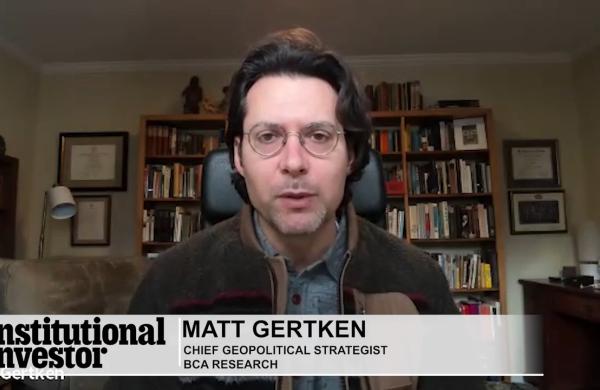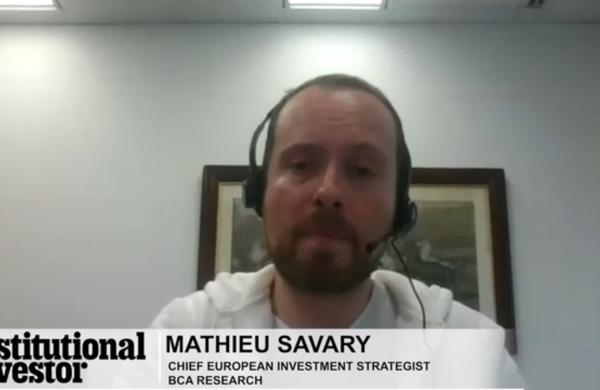Being a trader isn't easy -- and not just because markets are mostly moving sideways, when they're not just moving down.
With recent market regulations favoring retail transactions, the average size of New York Stock Exchange and Nasdaq Stock Market trades has declined, making it harder and harder for institutions to achieve best execution -- the most favorable share price and the lowest cost -- on their big trades. Further complicating the traders' task, liquidity is increasingly scattered among alternative marketplaces like the Archipelago and Island electronic communications networks.
Technologists have offered one solution after another in recent years. But these have fallen victim to a combination of economics, inertia, system complexity and regulatory politics. Many players have lost hope of ever finding the Holy Grail -- a truly efficient, fully transparent electronic marketplace where buyers and sellers can meet on terms favorable to all. In short, a marketplace where all of the now-scattered pools of liquidity are brought back together.
One market veteran who hasn't given up is Christopher Keith. An automation pioneer who served as the NYSE's senior technology officer in the 1970s and 1980s, Keith believes he has the ultimate answer in a system he has created called PDQ, for Procedure Derived Quotation. Using a form of artificial intelligence, PDQ trolls the markets for interest in a given stock, rooting out blocks of liquidity that may not be visible to traders watching conventional order books. Then it follows preprogrammed rules to arrive at the best price. All this occurs in a fraction of the time it would take a human trader to work the order.
Two years in development, PDQ has piqued the interest of several major Wall Street firms. Dozens of securities industry executives have visited ExchangeLab, Keith's self-styled think tank in New York's trendy TriBeCa neighborhood, to take a look at PDQ. Keith stepped up his sales effort last year by hiring Steve Wunsch, founder of the now-defunct Arizona Stock Exchange, as president and chief marketing officer of ExchangeLab.
But Keith and Wunsch are struggling in the face of cash-strapped institutions' reluctance to spend money, especially on an untested idea. They say that five firms have indicated they are likely to use PDQ, but none has yet signed a contract.
Jim Ross, managing director of institutional sales and call-market trading at New York agency brokerage Burlington Capital Markets, says that his firm is in serious discussions with ExchangeLab and is likely to purchase PDQ once some technical details have been worked out. Davidge Data Systems Corp., a subsidiary of Atlanta-based software company S1 Corp., has agreed to incorporate PDQ into its smart order routing system for institutional trading. Keith is offering free trials to spark more interest. "Trying it involves no risk, no cost and almost no time," he says. "And for most, it won't even involve any kind of operational change."
Still, prospective buyers have reasons to be skeptical. PDQ is but the latest in a long line of purported cures for the institutional bottleneck. Keith himself had a hand in one highly touted alternative trading system, OptiMark, which failed to get off the ground in 2000. Wunsch was, at best, ahead of his time when he formed the Arizona Stock Exchange in 1990 to create an electronic auction market; the exchange, known as AZX, closed in October 2001 for lack of volume.
Keith, who at 72 has spent half his life working on market systems, says times have changed: PDQ is neither OptiMark nor AZX. To Keith, securities markets suffer from more "deformities" than ever -- the cumulative result of layer upon layer of regulations, the proliferation of off-exchange trading venues and of software to keep track of them and the increasing retail orientation of the NYSE and Nasdaq. Those markets, as well as the ECNs, average well under 1,000 shares per transaction, a far cry from the 20,000 and up that institutions typically want to trade, ideally without causing the adverse price movements known as market impact.
What especially needs fixing, from the institutional standpoint, are the consequences of rules-based program trading -- the triggering of transactions when certain market conditions occur. Many institutional investors now routinely use these "black box" formulas to execute their strategies. One upshot, says Keith, is a growing disparity between the so-called open order book -- the trading interest exposed to the marketplace -- and the latent liquidity that firms keep hidden in their proprietary books for fear of causing an adverse market impact. This imbalance has the effect of limiting the liquidity available for institutions' block trades.
PDQ is designed to consolidate all of that liquidity. Users send buy or sell orders to counterparties, just as they would in the absence of PDQ, but while an order is en route, the network scans for better-priced and larger-size matches at other participating firms. If it detects such a match, it generates a corresponding order, which is timed to arrive at the user's original destination a split second before the user's order. ExchangeLab, operating PDQ as an intermediary, would take a cut of the brokerage commissions, but without disintermediating the broker.
Says Wunsch, "PDQ is intended simply to create a liquidity pool for the industry."
Keith stresses that PDQ can plug into -- and will not preempt -- any existing trading platform, order routing system or institutional relationship. That means any market participant, from fund manager to broker to exchange or ECN, can use PDQ without having to change its operating procedures. A firm would, however, have to store its trading rules -- the mathematical algorithms for carrying out its strategies -- on the central PDQ server, where the trading instructions would interact.
Investors concerned about exposing their secret intentions to the market need to be convinced that they can entrust their code to Keith's virtual order book. But Keith says that once market participants fully understand the true neutrality of PDQ, how it works and how it solves liquidity problems, they will have no reason to hesitate.
KEITH AND WUNSCH LIKE TO SAY that other marketplaces have nothing to fear and that PDQ has no competitors. But it is hardly the first or only entry in the institutional liquidity field.
Earlier attempts to cater to institutions have either been too radical -- Opti-Mark would have required wholesale changes in the ways securities firms posted their orders and indications of interest -- or have succeeded only partially. For example, Posit, the trade-crossing service of New Yorkbased Investment Technology Group, tends not to attract the biggest trades; it handles fewer than 10,000 shares per transaction.
HarborsidePlus, a Jefferies & Co. spin-off that opened last year, serves 300 institutional brokers and on average exceeds 70,000 shares per transaction -- but it's a hybrid system that aggregates indications of interest electronically and, to a far greater extent than PDQ and other solutions, relies on live traders to complete the execution.
The clearest success so far is another New York operation, Liquidnet, launched in April 2001 by Seth Merrin, who in the 1980s invented trade order management software. His alternative trading system ended 2002 with 136 buy-side participants -- free of intermediary brokers and with minimal human intervention -- trading 7 million shares a day, 50,000 per transaction on average. "Archipelago and Island took two and a half years to get up to 3 million shares a day; we were there on day one," boasts CEO Merrin.
But some observers believe Liquidnet should be attracting more liquidity and transactions. "If that's what the buy side wanted, Liquidnet would be wildly successful, and clearly, it isn't," says John Wheeler, senior manager of equity trad ing at Kansas City, Missouribased American Century Investments. "There is still this comfort factor -- a certain amount of job security -- in being able to blame a broker for a bad trade. That's a tough nut to crack."
Adds Robert Hegarty, head of the securities and investments group at Needham, Massachusettsbased consulting firm TowerGroup: "There is always going to be a need for the savvy trader who understands the markets and the dynamics of human nature to get the trades done the right way. I don't see that going away."
Burlington Capital's Ross doesn't see PDQ conflicting with traditional methods. He says that PDQ promises to "expand traditional buy-side trading methods," and he praises ExchangeLab for "trying to find some new ways to address issues facing institutional investors, who are frustrated with the fragmentation, frustrated with the volatility and frustrated that they don't know where they need to be to get liquidity."
Keith isn't necessarily out to abolish all human interaction in financial markets. But he believes that it is inherently inefficient, and he has spent a long career trying to automate wherever feasible.
A 1951 graduate of Stanford University, where he majored in psychology, Keith started but never finished several graduate programs -- he was headed into the one at Princeton University taken by John Nash of A Beautiful Mind fame but veered off in other directions. Keith also dabbled in jobs ranging from teaching to writing to computer programming. In 1969, after leaving a market research company in Chicago, he landed at the NYSE to manage a Rand Corp. consulting project seeking solutions to the securities industry's back-office paper crisis.
The Rand project lasted a year. Keith then spent two years with computer ser-vices company Automatic Data Processing, returning to the NYSE in 1972 to work for Robert Hall, a former ADP executive who had become the first CEO of the Big Board's technology arm, the Securities Industry Automation Corp. Over the course of 17 years with the NYSE and SIAC, Keith introduced the Designated Order Turnaround and Common Messaging Switch systems, establishing a reputation as a technology visionary.
"Chris is always on the forefront of ideas," says Hall, now president and CEO of HarborsidePlus. "I always want to stay current with what he is thinking about and doing."
NYSE and SIAC colleagues called Keith "Dr. Science," recalls Lewis Horowitz, a former NYSE executive vice president and futures trading pioneer who retired in 1997 after 41 years at the Big Board. "Nobody understood a word he said; he was light years ahead of everybody else."
Keith didn't slow down after retiring from the NYSE in 1988. Besides working on OptiMark, he had a hand in developing the Nyfix Millennium electronic trading network and the Chicago Stock Exchange's Chicago Match, the first multiprice auction system. As president of Financial Auction Network, he designed an Internet-based equity trading system that was acquired by Madoff Technologies and eventually implemented as the Nasdaq Primex Auction System. Madoff joined with Citigroup and French investment bank Viel & Cie. to provide $4 million in capital for ExchangeLab, which Keith founded in 1992. But that's a pittance for technology development, and Keith has been starved for capital while trying to finish and sell PDQ.
Others who have tackled the problem don't discount Keith's visions or the likelihood that he'll attract customers. But they doubt the outcome will be revolutionary. Liquidnet's Merrin warns that, like any new entry, PDQ faces the challenge of building critical mass, which won't come quickly or easily. "It is very difficult to build up an amount of liquidity to be able to take it away from a primary exchange," says Merrin.
Keith argues that he's not trying to eliminate existing exchanges. But he certainly wouldn't mind disrupting them.
"The NYSE won't be able to ignore this," Keith says of PDQ. "No one has created something like this that merges the power of the computer with the peculiarity of the telephone."
Keith may just be doing what comes naturally -- and that could be PDQ's biggest challenge. "Chris saw the electronic revolution coming before anybody else did," says Robert Gasser, a former head of U.S. equity trading at J.P. Morgan & Co. who is now CEO of Nyfix. But Gasser thinks Keith may have to wait for the rest of the securities world to catch up.
Adds Keith's former boss, HarborsidePlus's Hall: "There is no question about his whole concept of how the market evolves. I think he's right on. It's just a slow evolution."





